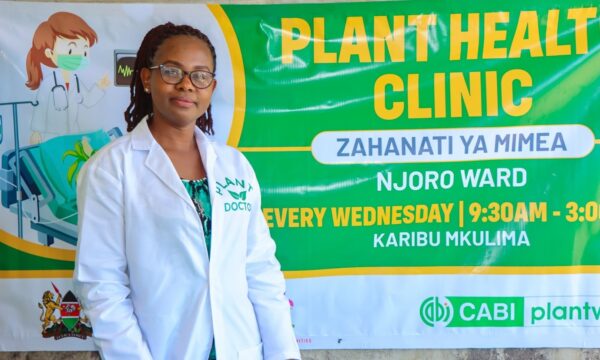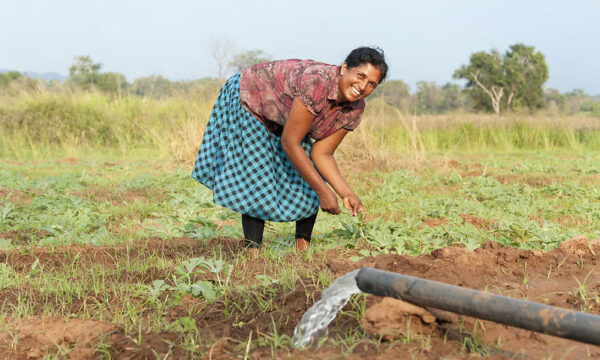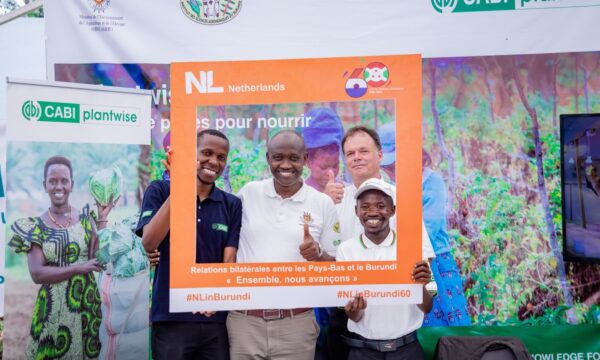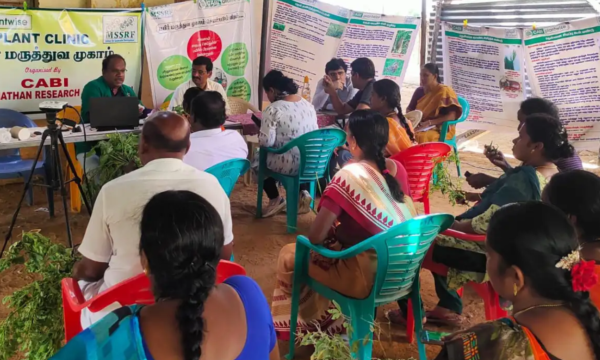
In the midst of its highly challenging surroundings, the INIA (National Institute of Agricultural Innovation) Experimental Station of Baños del Inca in Cajamarca offers an advisory service for smallholder farmers. Since 2013, when an agreement was signed between Plantwise and INIA, plant doctors Eng. Fernando Escobal Valencia and Eng. Marieta Cervantes Peralta operate plant clinics, one in Chamis and another in Chetilla. Three years of experience have taught them a lot about the challenge of providing a service that satisfies the demand, not just of male farmers, but of the women farmers too. A field visit in and around the town of Chamis showed how the plant clinics, through complimentary activities, can improve their reach so that more farmers can take advantage, especially women farmers. Creativity and flexibility are key, and above all, the willingness of the people.
Old pest, new tricks

The maize earworm enters along the corn silk. Once inside, it cannot be controlled and it starts to eat the ear of the corn from top to bottom.
Eusebia Ramos Castrejón plants a wide range of crops to eat at home. In a plot of about 1000 m2 she has maize intercropped with quinoa. There is a severe problem with maize earworm. This pest has its own slogan: “When the grains fill out, the worm is about.”
“The worm enters using the silk thread and eats the ear of corn”, explains doña Eusebia. Her brother opens several ears to show the worm. “Look, it enters here and starts to eat. When it is already inside, there is nothing you can do,” he explains as he points out a white worm about 3-4 mm long.
To keep the worm out, doña Eusebia is trying an INIA technique, applying cooking oil. Each ear has to be treated once just as the corn silk emerges. Since all ears do not mature at the same time, the treatment must be staggered, every week, for a total of three times from the time the corn silk starts to peek out of the ear. The treatment requires a total of 2-3 litres of oil and each application takes her about a day. With more practice she could probably do it quicker.

Doña Eusebia is trying cooking oil to control the maize earworm
This is the first time that doña Eusebia is trying this technique. “The agronomist told me that I have to apply the oil every week, and I am going to do it, she says,” laughing as she looks at Eng. Fernando. “I am going to do it”, she repeats herself. “I am going to see the result when I harvest”.
Fernando explains that the technology with cooking oil is 100% effective if done well. “It has been tested by INIA many times. It works and it is not expensive either. The expense per hectare is 56 sols for the oil (8 litres/ha) and 300 sols for the labour.”
Eng. Marieta agrees that giving good advice is not an easy thing. It is influenced by many factors. “The farmers we serve have very small subsistence farms,” she says. “The rural environment is very complex; it is important to understand that. Their farming systems are diverse and their problems are complex.” Fernando adds that the processes of adoption are slow. “First the farmers have to see that the technology works. Then the technology has to be accessible and affordably priced”.
When Fernando suggested that Eugenia try the oil, she was a little reluctant, because she did not have the money both for the oil and for the bus fare to go and buy it. Fernando offered to act as intermediary. “She gave me the 7 sols, and I bought her a litre of oil and sent it to her on the bus”, Fernando recalls.
At the end of the season, doña Eusebia will realise if the application of cooking oil has worked. The total cost will be between 14 and 21 sols for the oil plus 2 to 3 days of work, if she applies the whole treatment. With an estimated 50-80% of her crop infested by worms and 50% loss per ear, she could save her maize from a loss of between 25 and 40%. It is a considerable amount for a family whose food security depends on what they can take from their field.
Contributed by Sol Danielsen. Photos by Marieta Cervantes Peralta, José Gómez and Sol Danielsen.
Plantwise in Peru is coordinated by INIA, Ministry of Agriculture and Irrigation (MINAGRI), and implemented through 8 of the 19 experimental stations of INIA.
Related News & Blogs
“The health of plants, animals, people and the environment is interlinked in so many ways”
Without healthy crops, food systems crumble, livelihoods suffer, and communities become more vulnerable to food insecurity. PlantwisePlus supports countries in strengthening plant health systems and improving food quality, quantity, and security. Plant…
12 May 2025




